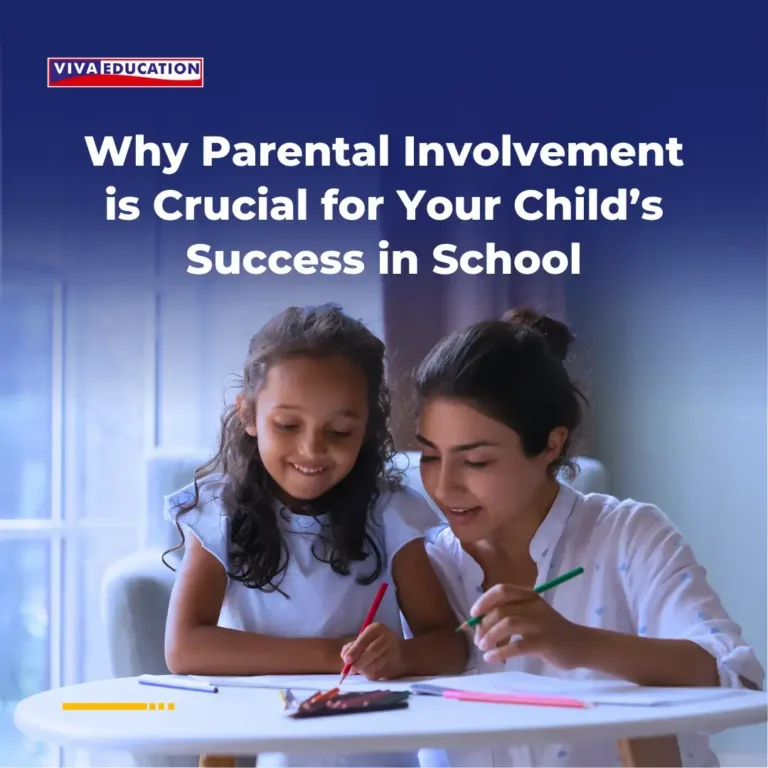How AI-Powered Adaptive Learning Is Transforming Classrooms in India?
- Parents, Teachers
- April 25, 2025
- Viva Education

Imagine Aarav, a bright 10-year-old from a school in Bangalore, struggles to grasp fractions while his friends move ahead with ease. Every day, he watches his classmates sail through lessons that seem like a mountain to climb for him. His teacher, Ms. Sharma, wants to help, but doesn’t have enough time to focus on Aarav’s specific struggles with so many other students in the class.
But then, the school introduces an adaptive learning platform powered by artificial intelligence. Suddenly, Aarav’s learning journey begins to change. The system recognises where he needs help and adapts the lessons to match his pace. It offers him extra practice on fractions and gives immediate feedback, making learning less overwhelming. Over time, Aarav’s confidence grows, and he catches up with his peers. This personalised approach, made possible by AI in education, is becoming more common in Indian classrooms, changing how children learn and teachers teach.
In the above example, the AI platform adapts to the learner; therefore, tutoring is considered an adaptive learning experience. In this article, we’ll explore how adaptive learning is transforming classrooms and the benefits it brings.
What Is Adaptive Learning, and How Does It Work?
Adaptive learning is an educational method that uses technology, artificial intelligence (AI), and data to create personalised learning experiences for each student. Rather than following a fixed sequence of content for all learners, adaptive learning systems respond dynamically to each student’s performance. This means the system changes the lessons, activities, and assessments in real-time to suit the student’s individual progress.
Here’s how it works: First, the system often assesses a student’s current knowledge either through an initial diagnostic test or by observing their interaction with early content. For instance, a math program might test basic skills or continuously analyse a student’s learning behaviour and progress before moving on to more difficult concepts. Based on the student’s performance, the system adjusts in three main ways:
- Content: It offers specific feedback, hints, or additional resources, such as explanations of mistakes, to help the student.
- Sequence: It changes the order of lessons if a student is struggling; it may delay new topics until they understand the current one better. If a student is progressing well, they might move ahead faster.
- Assessment: The difficulty of questions is adjusted based on the student’s answers. If they answer correctly, the system presents more complex questions. If they make mistakes, the system simplifies the questions to help them understand better.
Which is NOT an adjustment factor in adaptive learning?
The system uses intelligent algorithms, such as Bayesian Knowledge Tracing, to track progress and make these adjustments.
Why Does Adaptive Learning Matter in Today’s Classroom?
Adaptive learning addresses India’s pressing educational challenges with precision. The country’s classrooms, which average 35 students per teacher, struggle to cater to diverse learning levels; less than 30% of Grade 5 students can solve fundamental division problems.
A study indicates that 43% of rural students aged 14 – 18 are unable to read sentences in English, contributing to disengagement and higher dropout rates. This gap highlights the need for more effective approaches to support literacy development and student retention in these areas. Adaptive learning disrupts this by offering real-time, personalised remediation, proven to boost foundational skills: a 2022 pilot in Rajasthan’s Mission Buniyaad, using tailored digital content, improved learning outcomes by 16% for 35,000 students over six months.
With India’s youth population (aged 15–29) projected to reach 34% by 2040, adaptive learning systems align with the National Education Policy (NEP) 2020’s focus on “equitable, inclusive, and personalised education.” Research shows that AI-driven adaptive tools can improve learning outcomes significantly in STEM subjects, which is important for a nation aiming to upskill 400 million workers by 2027. For teachers, these systems can reduce administrative burdens, allowing them to focus more on mentoring rather than on repetitive instruction.
10 Best AI Tools and Platforms Driving Adaptive Learning
AI-powered platforms are now a common feature in classrooms worldwide. These platforms are designed to make learning more personalised and efficient by adapting content to each student’s needs. Here are some of the most popular AI-powered tools that support adaptive learning:
1. DreamBox
DreamBox is an adaptive learning platform for K-8 students, focusing on maths. It uses a sophisticated Intelligent Adaptive Learning Engine that customises lessons for each student.
- How it works: It tracks up to 48 data points per session, adjusting the difficulty of lessons based on how a student solves problems, their pace, and the strategies they use.
It helps students in classrooms where individual attention is limited. Studies show DreamBox users experience 2.5 times more growth in maths than traditional methods
2. Knewton (Alta)
Knewton offers adaptive learning solutions for a wide range of subjects, from K-12 to higher education.
- How it works: It personalises learning by assessing a student’s current knowledge level and adapting content accordingly. Knewton’s AI tracks progress and guides students through tailored pathways, presenting lessons when they are most ready for them.
It provides real-time feedback, boosting student engagement and improving understanding, making it particularly useful in diverse classroom environments, such as those in India.
3. CENTURY Tech
CENTURY Tech is an AI-powered learning platform designed for K-12 education. It uses a neuro-adaptive engine to deliver personalised learning content.
- How it works: The platform analyses real-time student responses and automatically adjusts the content to ensure it aligns with individual learning needs. It provides lessons, quizzes, and exercises tailored to each student
CENTURY helps teachers focus on areas where students need the most attention, saving time and improving academic outcomes. Schools using CENTURY in the UK saw a 20% increase in exam results
4. Smart Sparrow
Smart Sparrow offers an adaptive learning platform for higher education and specialised courses, such as medical training.
- How it works: Educators can design custom adaptive lessons where content changes dynamically based on student responses. If students answer incorrectly, the platform guides them to the correct path with scaffolded support
It helps improve retention and reduces dropout rates. In one case, Arizona State University reported an 18% reduction in dropout rates for biology students using Smart Sparrow
5. McGraw-Hill Education’s ALEKS
ALEKS (Assessment and Learning in Knowledge Spaces) is an adaptive learning platform primarily for STEM subjects, particularly mathematics.
- How it works: ALEKS begins by conducting an initial knowledge check to identify the student’s learning gaps. It then provides tailored lessons to fill those gaps and continuously adapts the content based on the student’s progress.
ALEKS has been shown to improve student grades by 94% compared to those who did not use the platform. This makes it ideal for classrooms in India, where maths is a key focus area
6. Squirrel AI
Squirrel AI is a leading AI-driven adaptive learning platform developed in China. It focuses on delivering personalised learning experiences in subjects like maths, science, and language arts
- How it works: It uses a cognitive diagnosis model to understand the strengths and weaknesses of each student, adapting in real time to deliver targeted content
Squirrel AI helps improve academic performance by offering personalised support, particularly for students struggling with specific topics. It has been deployed in several regions globally, including India, where the demand for adaptive learning is increasing
7. CogBooks
CogBooks is an adaptive learning platform designed to personalise learning materials for higher education courses, particularly in maths and science
- How it works: The platform uses AI and machine learning to analyse students’ progress and personalise content. It adapts the pacing of the course and identifies knowledge gaps, offering targeted interventions
CogBooks has been shown to help students achieve better results by providing the right level of challenge and support. It is useful in classrooms where personalised, data-driven learning is needed
8. Achieve3000
Achieve3000 is a platform focused on reading and literacy, offering adaptive reading material tailored to the learner’s reading level.
- How it works: The platform assesses students’ reading comprehension and adjusts reading passages based on their skill level, providing personalised content that enhances both reading speed and understanding.
It is beneficial in classrooms with students at varying reading proficiency levels. Achieve3000 has shown significant improvements in reading scores, with students improving by multiple grade levels within one year.
9. Canvas by Instructure
Canvas is a widely used learning management system (LMS) that integrates adaptive learning tools to personalise student experiences.
- How it works: Canvas tracks student performance data and uses analytics to create adaptive learning pathways that can be used to adjust content delivery, quiz timing, and lesson pacing.
Teachers can create more personalised and engaging classroom experiences. Canvas allows seamless integration of adaptive learning technologies to support diverse learning needs, making it an excellent choice for Indian schools transitioning to digital platforms.
10. Fishtree
Fishtree is a platform that focuses on adaptive learning and assessment for students in K-12. It provides content and assessments that adjust to students’ learning needs.
- How it works: Fishtree integrates AI-driven recommendations for personalised learning paths and provides real-time data for teachers to track progress and offer focused support.
Fishtree is great for Indian schools where students’ learning needs can vary significantly. It empowers teachers to offer a more tailored education, improving overall performance and engagement.
How Can AI and Adaptive Learning Benefit Teachers?
While adaptive learning focuses on the students’ experience, it also offers significant benefits for teachers. AI-powered tools help educators optimise their teaching strategies and make more informed decisions. Here’s how:
1. Time-Saving Tools
One of the biggest challenges teachers face is the sheer amount of time spent grading assignments, tracking student progress, and preparing lessons. AI-driven adaptive learning systems help automate many of these tasks. For instance, automated grading tools can quickly assess quizzes and assignments, freeing up valuable time for teachers to focus on creative lesson planning and one-on-one interactions with students.
2. Data-Driven Insights
AI in education provides teachers with real-time data on student performance. Teachers can see which students are excelling and which are struggling, and they can use this information to adjust their teaching accordingly. For example, if a large percentage of the class is working with a particular concept, the teacher can modify their lesson plans to provide more targeted support.
3. Differentiated Instruction
AI in education allows teachers to differentiate instruction based on individual student needs. AI can group students by skill level and suggest activities that are appropriate for each group. This enables teachers to provide more personalised instruction, whether in small groups or through one-on-one tutoring.
4. Customised Resources
With adaptive learning platforms, teachers can generate customised educational materials. These could include flashcards, quizzes, and worksheets tailored to the individual needs of their students. By using these resources, teachers can provide more effective, targeted support to help students overcome specific challenges.
What Are the Challenges and Solutions of Using AI in Education?
While adaptive learning and AI in education have many benefits, there are also several challenges to consider when implementing these technologies in classrooms.
1. Privacy and Security
As AI in education systems collect and analyse data on student performance, privacy and security concerns are critical. Schools and educators must ensure that they use platforms that comply with data protection regulations such as GDPR and COPPA. It’s also important to choose platforms that anonymise student data and prevent sharing it with third parties.
2. Equity and Access
Not all students have access to the devices and internet required for adaptive learning. To address this issue, schools and districts can provide students from low-income backgrounds with devices and internet access. Additionally, schools can make AI-driven learning tools available in computer labs, ensuring that all students have access to these resources, even if they don’t have access at home.
3. Balancing Technology with Traditional Methods
While AI and adaptive learning systems offer significant benefits, they should not replace traditional teaching methods. Teachers should combine AI in education with hands-on activities, group work, and face-to-face instruction to ensure a well-rounded educational experience.
4. Teacher Training
For AI in education to be effective, teachers need to be adequately trained on how to use AI-driven tools and interpret the data they provide. Professional development programs can help educators acquire the skills they need to integrate adaptive learning systems into their classrooms effectively.
What Does the Future Hold for Adaptive Learning in the Classroom?
The future of adaptive learning is bright, with many exciting developments on the horizon. We can expect continued advancements in artificial intelligence in education that will further personalise and enhance learning.
1. AI Tutors
AI-powered voice assistants could soon become common in classrooms, providing students with real-time support for homework and assignments. These voice-activated tutors could offer explanations, answer questions, and guide students through challenging material.
2. Immersive Learning
With the integration of virtual reality (VR), students could experience immersive learning environments that adjust to their level of understanding. For example, students can explore different ecosystems or historical periods on a virtual field trip, with the complexity of the experience tailored to their level of knowledge.
3. Automated Administrative Tasks
AI will continue to assist teachers with administrative tasks, such as drafting IEP (Individual Education Plan) goals or organising parent-teacher conferences. By automating these tasks, teachers will have more time to focus on teaching.
Conclusion
AI-powered adaptive learning is transforming classrooms by making learning more personalised, engaging, and efficient. Both students and teachers benefit from the ability to tailor the learning experience to individual needs, ensuring that every student has the support they need to succeed. As artificial intelligence in education continues to evolve, we can expect even more innovations that will make learning more accessible and impactful for all.
Frequently Asked Questions:
1. How does an adaptive learning system understand each student’s level?
Adaptive platforms usually begin with diagnostic assessments or quick learning checks. Based on how a student responds, the system identifies strengths, gaps, and preferred pace. It then adjusts difficulty, sequence, and type of content accordingly.
2. How often is student progress updated?
Most systems track performance in real time. Each activity, quiz, or interaction helps the platform refine the learner profile and continuously adapt the content.
3. What infrastructure is needed to implement adaptive learning?
You typically need:
- Digital devices (computers/tablets shared or individual)
- Reliable internet
- Teacher dashboards for monitoring
Schools with limited connectivity can use hybrid or offline-sync models.
4. Do teachers need special training to use adaptive platforms effectively?
Yes. Teachers benefit from training on:
- Reading dashboards
- Interpreting performance data
- Planning interventions based on insights
- Blending platform activities with classroom teaching
This ensures the tool amplifies—not replaces—the teacher’s role.
5. Will adaptive learning fit our existing curriculum and syllabus?
Adaptive platforms are usually mapped to the school curriculum. Teachers still follow the syllabus; the system simply helps personalise reinforcement, practice, and remediation.
6. If every student is on a personalised path, how do we maintain class-level pacing?
The main instructional sequence remains the same. Personalisation affects practice, difficulty level, and revision, not the core curriculum. Teachers can also lock or unlock topics as required.
7. Does adaptive learning support group work and classroom interaction?
Yes. Individual pathways run alongside teacher-led activities, group tasks, peer learning, and discussions. The system supports—not replaces—collaborative learning.
8. Will AI reduce the role of teachers?
Not at all. AI reduces repetitive tasks like checking practice work, tracking performance, and generating worksheets.
Teachers spend more time mentoring, motivating, and conducting meaningful learning experiences.
9. How does adaptive learning address the digital divide?
Schools can adopt:
- Shared devices
- Lab-based rotation
- Offline download & later sync
- Blended models combining textbooks and digital tools
This ensures all students benefit regardless of home access.
10. Can the system support multilingual classrooms?
Yes. Most adaptive platforms support content in multiple languages or offer visual/interactive reinforcement that reduces language barriers. Teachers decide the language mode based on the school’s medium.
11. Is adaptive learning helpful for students with special educational needs (SEN)?
Many platforms include:
- Audio support
- Visual cues
- Read-aloud tools
- Slower progression
- Repeated practice
- Personalised remediation
Teachers can combine these with their own SEN strategies for effective support.
12. What kind of data or insights will teachers see?
Dashboards typically show:
- Student strengths & weaknesses
- Topic-wise progress
- Accuracy, speed, and attempts
- Suggested interventions
- Class-level comparison
- Alerts for struggling learners
These insights help teachers tailor support.
13. How can schools measure the long-term impact of adaptive learning?
Schools can track:
- Baseline vs. end-term performance
- Improvement in accuracy and speed
- Reduction in learning gaps
- Teacher time saved
- Increased student engagement
Most dashboards provide reports aligned with these metrics.
14. Will students feel “judged” by algorithms?
No. Adaptive systems personalise learning without labelling or grouping students publicly. Only teachers see the performance insights; the focus remains on growth, not comparison.
15. What is the future of adaptive learning?
Emerging tools may include:
- AI tutors for homework help
- VR/AR for immersive learning
- Predictive analytics for early intervention
However, human teachers will always remain central to emotional, social, and conceptual growth.
Please Share



